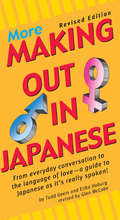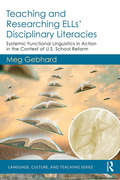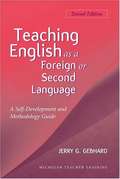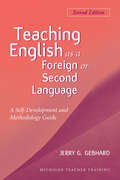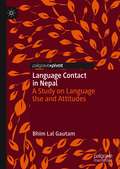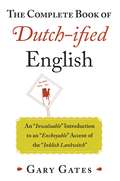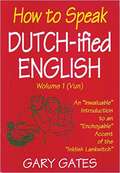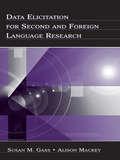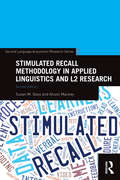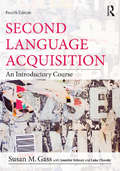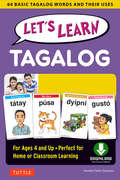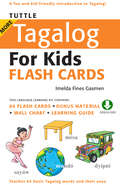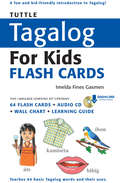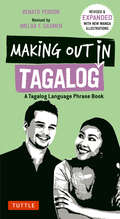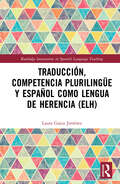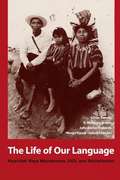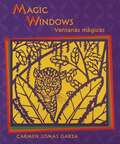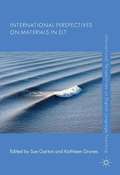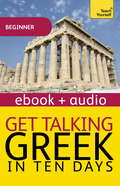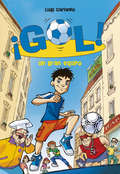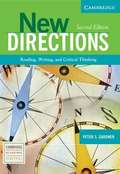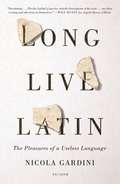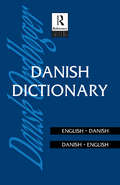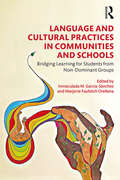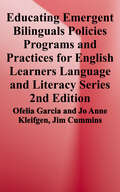- Table View
- List View
More Making Out in Japanese
by Erika Geers Glen Mccabe Todd GeersMaking Out in Japanese is a fun, accessible and thorough guide to the Japanese language as it's really spoken.Sugoku suki! Mata aeru?--(I'm crazy about you! Shall we meet again?) Answer this correctly in Japanese and you may be going on a hot date. Incorrectly, and you could be hurting someone's feelings or getting a slap! Japanese classes and textbooks tend to spend a lot of time rehearsing for the same fictitious scenarios but chances are while in Japan you will spend a lot more time trying to make new friends or start new romances--something you may not be prepared for.If you are a student, businessman or tourist traveling to Japan and would like to have an authentic and meaningful experience, the key is being able to speak like a local. This friendly and easy-to-use phrasebook makes this possible. Making Out in Japanese has been updated and expanded to be even more helpful as a guide to modern colloquial Japanese for use in everyday informal interactions--giving access to the sort of catchy Japanese expressions that aren't covered in traditional language materials. As well as the Romanized forms (romanji), each expression is now given in authentic Japanese script (kanji and kana with furigana pronunciation clues), so that in the case of difficulties the book can be shown to the person the user is trying to communicate with.This phrasebook includes:A guide to pronouncing Japanese words correctlyExplanations of basic Japanese grammar, such as, intonation, word stress, and particlesA guide to male and female usageRomanized forms of words and phrases (romanji)Complete Japanese translations including Japanese characters (kanji) and the Japanese alphabet (kana)Useful and interesting notes on Japanese language and cultureLots of colorful, fun and useful expressions not covered in other phrasebooksTitles in this unique series of bestselling phrase books include: Making Out in Chinese, Making Out in Indonesian, Making Out in Thai, Making Out in Korean, Making Out in Hindi, Making Out in Japanese, Making Out in Vietnamese, Making Out in Burmese, Making Out in Tagalog, Making Out in Hindi, Making Out in Arabic, Making Out in English, More Making Out in Korean, and More Making Out in Japanese.
Teaching and Researching ELLs’ Disciplinary Literacies: Systemic Functional Linguistics in Action in the Context of U.S. School Reform (Language, Culture, and Teaching Series)
by Meg GebhardWritten from a critical perspective, this volume provides teachers, teacher educators, and classroom researchers with a conceptual framework and practical methods for teaching and researching the disciplinary literacy development of English language learners (ELLs). Grounded in a nuanced critique of current social, economic, and political changes shaping public education, Gebhard offers a comprehensive framework for designing curriculum, instruction, and assessments that build on students’ linguistic and cultural resources and that are aligned with high-stakes state and national standards using the tools of systemic functional linguistics (SFL). By providing concrete examples of how teachers have used SFL in their work with students in urban schools, this book provides pre-service and in-service teachers, as well as literacy researchers and policy makers, with new insights into how they can support the disciplinary literacy development of ELLs and the professional practices of their teachers in the context of current school reforms. Key features of this book include the voices of teachers, examples of curriculum, sample analyses of student writing, and guiding questions to support readers in conducting action-oriented research in the schools where they work.
Teaching English as a Foreign or Second Language: A Teacher Self-development and Methodology Guide
by Jerry G. GebhardTeaching English as a Foreign or Second Language, Second Edition, is designed for those new to ESL/EFL teaching and for self-motivated teachers who seek to maximize their potential and enhance the learning of their students. This guide provides basic information that ESL/EFL teachers should know before they start teaching and many ideas on how to guide students in the skills of listening, speaking, reading, and writing. It stresses the multifaceted nature of teaching the English language to non-native speakers and is based on the real experiences of teachers. The second edition of Teaching English as a Foreign or Second Language includes a wider range of examples to coincide with a variety of teaching contexts-from K-12 schools, to university intensive language programs and refugee programs. It is also updated with discussions of technology throughout, and it considers ways in which technology can be used in teaching language skills. Sources for further study are included in each chapter and in the appendixes.
Teaching English as a Foreign or Second Language: A Teacher Self-Development and Methodology Guide, Second Edition
by Gebhard Jerry G.Teaching English as a Foreign or Second Language, Second Edition, is designed for those new to ESL/EFL teaching and for self-motivated teachers who seek to maximize their potential and enhance the learning of their students. This guide provides basic information that ESL/EFL teachers should know before they start teaching and many ideas on how to guide students in the skills of listening, speaking, reading, and writing. It stresses the multifaceted nature of teaching the English language to non-native speakers and is based on the real experiences of teachers. The second edition of Teaching English as a Foreign or Second Language includes a wider range of examples to coincide with a variety of teaching contexts-from K-12 schools, to university intensive language programs and refugee programs. It is also updated with discussions of technology throughout, and it considers ways in which technology can be used in teaching language skills. Sources for further study are included in each chapter and in the appendixes.
Language Contact in Nepal: A Study on Language Use and Attitudes
by Bhim Lal GautamThis book examines language contact and shift in Nepal, a multilingual context where language attitudes and policies often reflect the complex socio-cultural and socio-political relationship between minority, majority and endangered languages and peoples. Presenting the results of a 15-year study and making use of both quantitative and qualitative data, the author presents evidence relating to speakers' opinions and perceptions of mother tongues including English, Hindi, Nepali, Sherpa, Dotyali, Jumli and Tharu. This book explores an under-studied part of the world, and the findings will be relevant to scholars working in other multilingual contexts in fields including language policy and planning, language contact and change, and language attitudes and ideologies.
The Complete Book of Dutch-ified English: An “Inwaluable” Introduction to an “Enchoyable” Accent of the “Inklish Lankwitch”
by Gary GatesHere is a book for anyone tired of speaking flat, colorless, homogenized English. Pennsylvania Dutchman Gary Gates provides a glossary, read-aloud section, songs, recipes, and more in this delightful, ?inwaluable” introduction to Dutch-ified English.Learn the meaning of ?rutch” and ?spritz,” what a ?clod” and a ?crotch” are, how to pronounce and make ?Cussin Rache’s Snitz and Knepp,” and what has happened to food when it’s ?all.” Spice up your vocabulary with delightful words and phrases, such as:? Grex: To complain, moan. ?Ah, quit your grexing, you have a vonderful life.”? Face: Belief, religious conwiction. ?Praise be! Rebecca has found her face in the Lord again!”? Gruntbecky: An expression of hard going. ?Gruntbecky! It’s difficult to run in this hot sun.”? Nix nootz: A devilish, mischievous person. ?Our daughter is a little nix nootz.”? Rupdawn: A massage. ?A good rupdawn will take the ache away.”Tired of trying to conform to traditional speech patterns, Gary offers a warm and funny celebration of the unique Dutch culture in America.
How to Speak Dutch-ified English: An "Inwaluable" Introduction To An "Enchoyable" Accent Of The "Inklish Lankwitch (Vol #1)
by Gary GatesHere is a book for anyone tired of speaking flat, colorless, homogenized English. Pennsylvania Dutchman Gary Gates provides a glossary, read-aloud section, songs, recipes, and more in this delightful, inwaluble introduction to Dutch-ified English. Learn the meaning of "rutch" and "spritz," what a "clod" and a "crotch" are, how to pronounce and make "Cussin Rachel's Snitz und Knepp," and what has happened to food when it's all. As you read this book you will not only learn how to speak better, but when an American Dutchman becomes president you will understand him when he addresses the nation in Dutch-ified English.
Data Elicitation for Second and Foreign Language Research (Second Language Acquisition Research Ser.)
by Susan M. Gass Alison MackeyThis timely reference guide is specifically directed toward the needs of second language researchers, who can expect to gain a clearer understanding of which techniques may be most appropriate and fruitful in given research domains. Data Elicitation for Second and Foreign Language Research is a perfect companion to the same author team‘s bestsellin
Stimulated Recall Methodology in Applied Linguistics and L2 Research (Second Language Acquisition Research Series)
by Susan M. Gass Alison MackeyStimulated Recall Methodology in Applied Linguistics and L2 Research provides researchers and students in second language acquisition and applied linguistics with the only how-to guide on using stimulated recalls in their research practice. This new edition expands on the scope of the previous edition, walking readers step-by-step through a range of studies in applied linguistics in order to demonstrate the history of stimulated recalls and their efficacy as a data collection tool. With its exclusive focus on stimulated recalls, coverage of the most up-to-date research studies, and pedagogically rich text design, Stimulated Recall Methodology in Applied Linguistics and L2 Research supplies researchers and students with the practical skills to elicit richer data in their own research.
Second Language Acquisition: An Introductory Course
by Susan M. GassNow in a fourth edition, this bestselling introductory textbook remains the cornerstone volume for the study of second language acquisition (SLA). Its chapters have been fully updated, and reorganized where appropriate, to provide a comprehensive yet accessible overview of the field and its related disciplines. To reflect current developments, new sections on using learner corpora, semantics and morphosyntax (within formal approaches to SLA), sociocultural approaches, gesture, priming research, and chaos theory have been added. Students will also find expanded discussions of heritage language learning, bilingualism, pragmatics, and much more. The redesigned fourth edition of Second Language Acquisition retains the features that students found useful in the current edition but also provides new pedagogical tools that encourage students to reflect upon the experiences of second language learners. As with previous editions, discussion questions and problems at the end of each chapter help students apply their knowledge, and a glossary defines and reinforces must-know terminology. This clearly-written, comprehensive, and current textbook, by expert Sue Gass, is the ideal textbook for the introductory SLA course in second language studies, applied linguistics, linguistics, TESOL, and language education programs.
Let's Learn Tagalog: 64 Basic Tagalog Words and Their Uses-For Children Ages 4 and Up
by Imelda Fines GasmenLet's Learn Tagalog Kit is a complete language learning tool specially designed to introduce young children to the basic Tagalog sounds, words, and phrases in a fun and interactive way. <P><P> This kit is perfect for use in a classroom setting, for home schooling, on vacation, or anywhere else that learning takes place. It is intended for learners who have little or no background in the Tagalog language. It contains: 64 flash cards An audio CD with recordings of words, sentences and songs A wall chart showing the main words and phrases at a glance A 32-page Learning Guide for parents and teachers The 64 words are organized into thematic categories, including: My Family Colors Numbers Animals Food My Body Clothes My Day Each word is illustrated with a picture that serves as an effective visual aid to learning and remembering the word. The words often reflect cultural objects and can be studied in any order. Tagalog language learners may focus on one theme at a time or mix them up for greater variety. Simple example sentences are given for each word to show how they are used. The audio CD gives native-speaker pronunciations for all the words and sentences and also contains songs which promote interactive language learning. Finally, the kit includes a wall chart featuring all the pictures and words, and some bonus words; a booklet explaining how to use the flash cards, and additional activities; an audio CD and a wall chart.
Tuttle More Tagalog for Kids Flash Cards
by Imelda Fines GasmenA fun and kid-friendly introduction to Tagalog!The Tuttle MORE Tagalog for Kids Flash Cards is an introductory language learning tool especially designed to help children from preschool through early elementary level acquire basic words, phrases, and sentences in Tagalog-the official language of the Philippines- in a fun and easy way.<P><P>The flashcards can be used as a learning tool in a classroom setting, at home, or anywhere that learning takes place, and can easily be taped around the room for an interactive learning experience. The set contains a total of 64 words organized into thematic categories, including: Nature, Weather, Opposites, Actions, Things I Like To Do, At My House, and Going to Different Places. All of the words are illustrated-the pictures serve as effective visual aids to help children learn and remember each word's meaning. Words often reflect cultural objects and items and can be studied in any order. Learners may focus on one theme at a time or mix them up for a little more variety.Also included is downloadable audio which provides native pronunciation of the words, and sample sentences for practice-sentences that children would use in everyday life. Songs and other activities are also included along with a wall chart featuring the front of each card for kids to review and a learning guide for teachers and/or parents with tips, activities and more!If your child is really interested in learning more words, and you missed the first one, check out the Tuttle Tagalog for Kids Flash Cards (978-0-8048-3957-0).
Tuttle Tagalog for Kids Flash Cards Kit
by Imelda Fines GasmenA fun and kid-friendly introduction to Tagalog!<P><P>The Tuttle Tagalog for Kids Flash Cards kit is an introductory language learning tool especially designed to help children from preschool through early elementary level acquire basic words, phrases, and sentences in Tagalog in a fun and easy way.The flashcards can be used as a learning tool in a classroom setting, at home, or anywhere that learning takes place. The set contains a total of 64 words organized into thematic categories, including: My Family, Colors, Numbers, Animals, Food, My Body, Clothes, and My Day. All of the words are illustrated-the pictures serve as effective visual aids to help children learn and remember each word's meaning. Words often reflect cultural objects and items and can be studied in any order. Learners may focus on one theme at a time or mix them up for a little more variety.A downloadable audio CD provides native pronunciation of the words, and sample sentences for practice, as well as songs and other activities. Also included is a wall chart featuring the front of each card for kids to review and a learning guide for teachers and/or parents with tips, activities and more!
Making Out in Tagalog: A Tagalog Language Phrase Book
by Imelda F. Gasmen Renato PerdonMaking Out in Tagalog is your indispensable guide to contemporary Tagalog language (Filipino) as it's really spoken on the streets of Manila.This best-selling Tagalog phrase book is the perfect introduction to everyday interactions in The Philippines and other Tagalog-speaking countries, and includes colorful slang that'll help rev up your social life. A great way to learn Tagalog, Making Out in Tagalog features a pronunciation guide, and notes on Tagalog language and culture. With Making Out in Tagalog you'll be able to express yourself when: Making new friends Sharing a meal Going out on the town Flirting and getting amorous And much more!Each expression in this book is given in Tagalog and their English translations. It is designed to enhance your experience in using the language (and in a pinch, you can show the Tagalog text to the person you're speaking to). Making Out in Tagalog also includes interesting tips on social norms and cultural practices, eating, social media, hanging out, and other situations. For the savvy traveler, this is a Tagalog phrasebook you won't want to be without!
Traducción, competencia plurilingüe y español como lengua de herencia (Routledge Innovations in Spanish Language Teaching)
by Laura Gasca JiménezTraducción, competencia plurilingüe y español como lengua de herencia (ELH) explora las conexiones entre la ensenanza del ELH y la competencia traductora. En el libro se identifican estrategias para que las experiencias y practicas linguisticas de los estudiantes del espanol como lengua de herencia se vean representadas en el contexto de la formacion profesional de traduccion e interpretacion. Basado en un estudio empirico con estudiantes universitarios, esta monografia ofrece pautas para fomentar el desarrollo de habilidades de traduccion a partir de tres dimensiones principales: como estrategia plurilingue, actividad pedagogica y destreza profesional. Por su caracter introductorio, este libro es de particular interes para profesores e investigadores del ELH que buscan integrar de manera sistematica la practica de la traduccion en sus actividades docentes. Asimismo, los profesores de traduccion e interpretacion que deseen aprender como potenciar la mediacion como componente de aprendizaje en las habilidades de traduccion e interpretacion encontraran en esta obra numerosas sugerencias para conseguirlo. Traducción, competencia plurilingüe y español como lengua de herencia (ELH) explores the connections between Spanish heritage language (SHL) education and translation competence. The volume identifies strategies to represent the linguistic experiences and practices of SHL students in the context of professional translation and interpreting training. Based on an empirical study with undergraduate students, this monograph provides insight on how to develop translation skills in three ways: as a plurilingual strategy, a pedagogical activity, and a professional skill. Because of its introductory nature, this book is of particular interest to SHL teachers and researchers seeking to systematically integrate translation practice into their teaching. Likewise, teachers of translation and interpreting who wish to learn how to enhance mediation as a learning component in translation and interpreting skills will find numerous suggestions on how to do so in this volume.
The Life of Our Language: Kaqchikel Maya Maintenance, Shift, and Revitalization
by Susan Garzon R. Mckenna BrownThe native Maya peoples of Mexico, Guatemala, Honduras, and Belize have been remarkably successful in maintaining their cultural identity during centuries of contact with and domination by outside groups. <P><P>Yet change is occurring in all Mayan communities as contact with Spanish-speaking Ladino society increases. This book explores change and continuity in one of the most vital areas of Mayan culture--language use. <P> The authors look specifically at Kaqchikel, one of the most commonly spoken Mayan languages. Following an examination of language contact situations among indigenous groups in the Americas, the authors proceed to a historical overview of the use of Kaqchikel in the Guatemalan Highlands. They then present case studies of three highland communities in which the balance is shifting between Kaqchikel and Spanish. Wuqu' Ajpub', a native Kaqchikel speaker, gives a personal account of growing up negotiating between the two languages and the different world views they encode. The authors conclude with a look at the Mayan language revitalization movement and offer a scenario in which Kaqchikel and other Mayan languages can continue to thrive.
Magic Windows (Ventanas Magicas)
by Carmen Lomas GarzaThrough the magic windows of her cut-paper art, Carmen shows us her family, her life as an artist, and the legends of her Aztec past. An accompanying workbook is described below.
International Perspectives On Materials In Elt
by Sue Garton Kathleen GravesThis book brings together different perspectives on ELT materials from a range of international contexts and a variety of educational settings. All the chapters are underpinned by sound theoretical principles while addressing practical concerns and debates in materials design and use.
Get Talking Greek: Enhanced Edition
by Hara Garoufalia-Middle Howard MiddleWhen travelling, do you want to journey off the English-speaking path, meet people and communicate easily? If so then you need to Get Talking. Through 10 common scenarios plus culture and travel advice, you'll learn the skills for understanding and the confidence to speak Greek in just 10 days.Practise the most frequent words and expressions for:-Making introductions and greeting-Making more introductions-Talking about your family-Saying where you live-Asking about directions and public transport-Finding your way around-Making a hotel reservation-Booking a hotel for friends-Eating out-Ordering food and drink.You'll progress in your understanding of naturally-paced conversations, be able to personalise the language through interactive role-plays and perfect your pronunciation to sound more natural.Rely on Teach Yourself, trusted by language learners for over 70 years
Gol 1. Un gran equipo
by Luigi Garlando3, 2, 1... ¡El espectáculo acaba de empezar! Bajo las órdenes de un míster algo peculiar, el señor Gaston Champignon, ocho niños y niñas han formado un equipo de fútbol de lo más disparatado. Se llaman Cebolletas y les espera una temporada repleta de grandes emociones (¡y muchísimo sudor!). Pero, antes de empezar, los ocho cracks ya han aprendido la lección más importante: para ganar solo hace falta ¡DIVERTIRSE!
New Directions: Reading, Writing, and Critical Thinking (Second Edition)
by Peter S. GardnerNew Directions, Second Edition is a thematic reading-writing book aimed at the most advanced ESL learners. The Student's Book prepares students for the rigors of college-level writing by having them read long, challenging, authentic readings as a precursor to writing. This emphasis on reading gives New Directions its distinctive character. Each of the five topic-based chapters contains three core readings and five additional readings. The readings come from a variety of genres and are accompanied by exercise material. The second edition represents a major revision. It contains two entirely new chapters and many new readings and activities in the other three. Another significant new feature is a section at the end of the first chapter that takes students through the writing process. Students work through it for their first writing assignment and return to this thorough treatment of the writing process for each subsequent major writing assignment.
Long Live Latin: The Pleasures of a Useless Language
by Nicola GardiniA lively exploration of the joys of a not-so-dead languageFrom the acclaimed novelist and Oxford professor Nicola Gardini, a personal and passionate look at the Latin language: its history, its authors, its essential role in education, and its enduring impact on modern life—whether we call it “dead” or not.What use is Latin? It’s a question we’re often asked by those who see the language of Cicero as no more than a cumbersome heap of ruins, something to remove from the curriculum. In this sustained meditation, Gardini gives us his sincere and brilliant reply: Latin is, quite simply, the means of expression that made us—and continues to make us—who we are. In Latin, the rigorous and inventive thinker Lucretius examined the nature of our world; the poet Propertius told of love and emotion in a dizzying variety of registers; Caesar affirmed man’s capacity to shape reality through reason; Virgil composed the Aeneid, without which we’d see all of Western history in a different light. In Long Live Latin, Gardini shares his deep love for the language—enriched by his tireless intellectual curiosity—and warmly encourages us to engage with a civilization that has never ceased to exist, because it’s here with us now, whether we know it or not. Thanks to his careful guidance, even without a single lick of Latin grammar readers can discover how this language is still capable of restoring our sense of identity, with a power that only useless things can miraculously express.
Danish Dictionary: Danish-English, English-Danish (Routledge Bilingual Dictionaries)
by Anna Garde W. Glyn JonesFirst Published in 1995. This compact and up to date, two-way dictionary provides a comprehensive and modern vocabulary. It is an ideal reference for beginners or specialists. The maximum information is provided in the minimum space, making the dictionary an invaluable reference source.
Language and Cultural Practices in Communities and Schools: Bridging Learning for Students from Non-Dominant Groups
by Inmaculada M. García-Sánchez Marjorie Faulstich OrellanaDrawing on sociocultural theories of learning, this book examines how the everyday language practices and cultural funds of knowledge of youth from non-dominant or minoritized groups can be used as centerpoints for classroom learning in ways that help all students both to sustain and expand their cultural and linguistic repertoires while developing skills that are valued in formal schooling. Bringing together a group of ethnographically grounded scholars working in diverse local contexts, this volume identifies how these language practices and cultural funds of knowledge can be used as generative points of continuity and productively expanded on in schools for successful and inclusive learning. Ideal for students and researchers in teaching, learning, language education, literacy, and multicultural education, as well as teachers at all stages of their career, this book contributes to research on culturally and linguistically sustaining practices by offering original teaching methods and a range of ways of connecting cultural competencies to learning across subject matters and disciplines.
Educating Emergent Bilinguals: Policies, Programs, and Practices for English Learners (Language and Literacy Series)
by Ofelia García Jo Anne KleifgenThis accessible guide in a revised and expanded edition introduces readers to the issues and controversies surrounding the education of language minority students in the United States. What makes this book a perennial favorite are the succinct descriptions of alternative practices for transforming our schools and students' futures, such as building on students' home languages and literacy practices, incorporating curricular and pedagogical innovations, using proven-effective approaches to parent engagement, and employing alternative assessment tools. <p><p>The authors have updated their bestseller to reflect recent shifts in policies, programs, and practices due to globalization and the changing economy; demographic trends; and new research on EL pedagogy. A totally new chapter highlights multimedia and multimodal instructional possibilities for engaging EL students. <p><p>This Second Edition is essential reading for all teachers of language-minority students, as well as principals, superintendents, and policymakers. <p><p>Book Features: <p>- Uses the most up-to-date research findings to demonstrate how ignoring children's bilingualism perpetuates inequities in their schooling. <p>- Points out the problems with current policies and practices and proposes more effective alternative methods. <p>- Contrasts the common view of bilingualism as either subtractive or additive with more current understandings of individual bilingualism in translanguaging theories. <p>- Highlights how multimodalities form part of students' communicative repertoire and shows teachers how they can leverage this to engage students.
